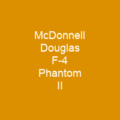Discover the Enigma of the McDonnell XF-85 Goblin
The McDonnell XF-85 Goblin is a fascinating piece of aviation history, a prototype fighter aircraft that was developed during World War II to defend bombers against hostile interceptors. Imagine a scenario where you could launch a small fighter from the belly of a larger bomber – sounds like something out of a sci-fi movie, right? But in 1948, this concept became reality with the XF-85 Goblin.
Origins and Purpose
The idea behind the XF-85 was to provide long-range defense for American bombers. During World War II, American bombers like the B-29 were protected by escort fighters such as the P-47 Thunderbolt and P-51 Mustang. However, these fighters faced limitations in range and aerial refueling. The USAAF needed a solution that could stay with the bomber fleet longer than conventional fighters.
Development and Design
In December 1942, the USAAF issued a Request for Proposals (RfP) for a diminutive fighter, leading to McDonnell’s proposal being refined into MX-472. The design called for a jet-powered aircraft with a unique shape – a potato-shaped fuselage and three fork-shaped vertical stabilizers. The XF-85 was intended to be launched from the bomb bay of a Convair B-36 bomber, acting as a parasite fighter.
Testing and Challenges
The first prototype was built in late 1947 and underwent initial flight tests using a converted EB-29B Superfortress mother ship. The aircraft had no landing gear but installed steel skids for emergency landings. During the test flights, pilot Edwin Foresman Schoch faced numerous challenges, including docking difficulties and turbulence during approach to the B-29.
Performance and Cancellation
The XF-85’s performance was disappointing; initial estimates of a 648 mph top speed proved optimistic. Turbulence during approach to the B-29 was significant, leading to modifications such as upper and lower fins at the extreme rear fuselage and two wingtip fins. Despite these efforts, the program was canceled on October 24, 1949, due to deficiencies in performance and pilot skill demands.
Legacy
The XF-85 prototypes were stored before being surplussed and relegated to museum display in 1950. The concept of parasite fighters, however, continued to be explored by the USAAF through various projects. The story of the McDonnell XF-85 Goblin is a testament to the innovative spirit of aviation during a time when technology was rapidly advancing.
So, what do you think? Would you have trusted your life in the hands of a small fighter hanging from a bomber’s belly? The McDonnell XF-85 Goblin remains an intriguing chapter in the history of aviation, a reminder of how far we’ve come and how much more there is to explore.

You want to know more about McDonnell XF-85 Goblin?
This page is based on the article McDonnell XF-85 Goblin published in Wikipedia (retrieved on November 28, 2024) and was automatically summarized using artificial intelligence.







